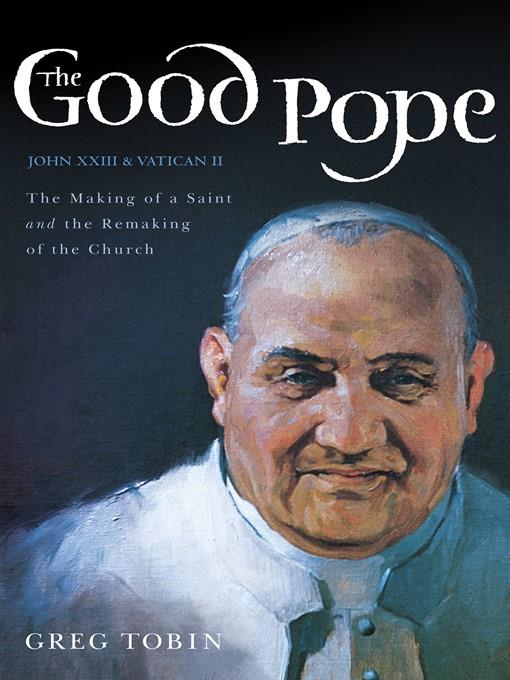
The Good Pope
The Making of a Saint and the Remaking of the Church--The Story of John XXIII and Vatican II
فرمت کتاب
ebook
تاریخ انتشار
2012
نویسنده
Sean Senechalنویسنده
Sean Senechalنویسنده
Greg Tobinناشر
HarperOneشابک
9780062089427
کتاب های مرتبط
- اطلاعات
- نقد و بررسی
- دیدگاه کاربران
نقد و بررسی

November 1, 2012
Anticipating the 50th anniversary in 2013 of the Second Vatican Council (Vatican II) with the likely raising of Pope John XXIII to sainthood, Tobin (vice president for university advancement, Seton Hall Univ.; Selecting the Pope) offers a readable biography of the humble Angelo Roncalli (1881-1963). Elected in 1958 as a harmless "transitional" pope, Roncalli's pivotal ideas of aggiornamento (updating) moved an institutional church from entrenchment to engagement with the modern world through Vatican II. While many biographies of Pope John XXIII have been written, especially in the 1960s, Tobin offers a 50-year contextual perspective on world events leading to Vatican II and beyond. He identifies such factors that shaped Pope John's impact as his peasant background, his humanitarian outlook, and his participation in diplomatic church activities throughout Bulgaria, Greece, Turkey, France, as patriarch of Venice, and, finally, as pontiff. VERDICT Both biography and Vatican II overview, this book offers new generations interested in religion and Roman Catholic Church history a fresh look at a world figure who balanced continuity with change and opened dialogs with believers and nonbelievers alike. Recommended.--Anna M. Donnelly, St. John's Univ. Lib., Jamaica, NY
Copyright 2012 Library Journal, LLC Used with permission.

September 1, 2012
A sincere, adoring look at the life and legacy of the humanist pope who helped modernize the Catholic Church with the convening of Vatican II. Although he served only briefly, from 1958 to 1963, Pope John XXIII, born a Bergamo peasant farmer's son named Angelo Giuseppe Roncalli, pushed back against the ultraconservative wing dominating the papacy since Pius X's turn-of-the-century reign. In this accessible biography, Tobin (Holy Holidays!: The Catholic Origins of Celebration, 2011, etc.) marks the 50th anniversary of the convening of the Second Vatican Council in October 1962 and John's likely canonization in 2013. At times, the author sounds a little awestruck in describing Roncalli's many diplomatic talents. Born in 1881 and ordained a deacon in 1903, he was formed by his early apprenticeship under Bishop Radini-Tedeschi of Bergamo, who employed a circle of liberal clergy advocating "the idea of Christ as an instrument of social change." Under his tutelage, Roncalli became an activist and world traveler, tiptoeing around Pius X's thundering denunciation of modernism; Roncalli was appointed by the more liberal Benedict XV for missionary work, then by Pius XI and Pius XII for diplomatic missions in Bulgaria, Greece, Turkey and postwar France. Revered for his work with refugees and ability to bring factions together, and well-liked by the other cardinals, Roncalli was nevertheless elected as a "transitional figure" to the papacy on October 28, 1958. Immediately, John began planning the first ecumenical council of the Church in 90 years, in the hope of embracing new currents of reform and renewal, especially as played out by the Cold War. The role of priests, evangelizing, use of the vernacular in Mass and changes in the liturgy, among others, were all reconsidered in the spirit of aggiornamento ("bringing up to date"). An upbeat survey of a decent, likable modern leader.
COPYRIGHT(2012) Kirkus Reviews, ALL RIGHTS RESERVED.

























دیدگاه کاربران